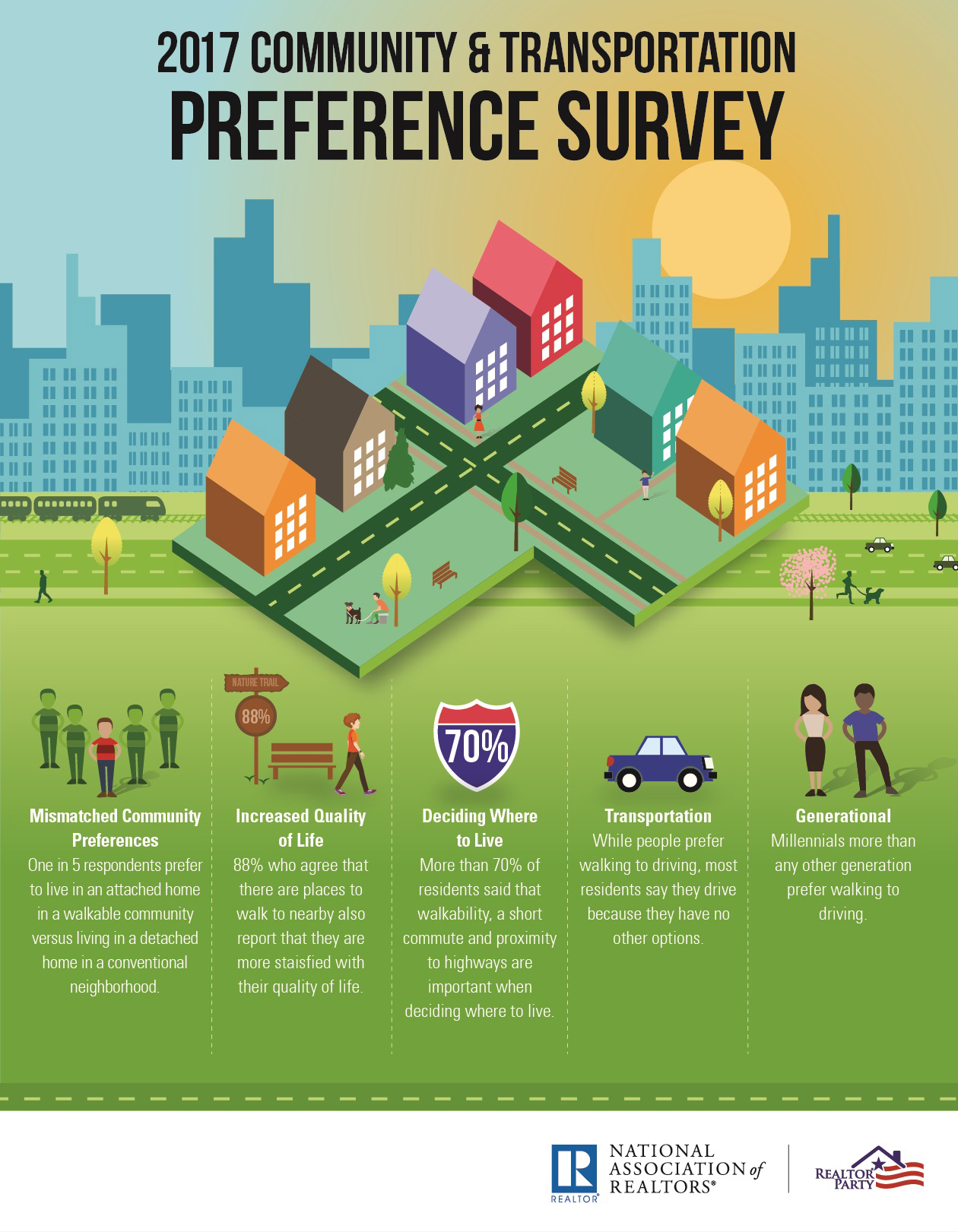You are viewing our site as an Agent, Switch Your View:
Agent | Broker Reset Filters to Default Back to ListMillennials and Silent Generation Drive Desire for Walkable Communities, Say Realtors
December 26 2017
WASHINGTON (December 19, 2017) — It is no longer just millennials propelling interest in walkable communities. According to a new report from the National Association of Realtors®, members of the silent or greatest generation, those born before 1944, also prefer smaller homes in neighborhoods with easy walks to shops and restaurants.
The 2017 National Community and Transportation Preference Survey, which polled adults from across the U.S. about what they are looking for in a community, found that 62 percent of millennials and 55 percent of the silent generation prefer walkable communities and short commutes, even if it means living in an apartment or townhouse. Gen-Xers and baby boomers still show a strong preference toward suburban living, with 55 percent of both groups saying that they have no problem with a longer commute and driving to amenities if it means living in a single-family, detached home.
"Realtors® understand that when people buy a home, they are not just looking at the house, they are looking at the neighborhood and the community," said NAR President Elizabeth Mendenhall, a sixth-generation Realtor® from Columbia, Missouri and CEO of RE/MAX Boone Realty. "While the idea of the 'perfect neighborhood' is different for every homeowner, more Americans are expressing a desire to live in communities with access to public transit, shorter commutes and greater walkability. Realtors® work tirelessly at improving their communities through smart growth initiatives that help transform public spaces into these walkable community centers."

According to the survey, the majority of Americans, 53 percent, would prefer to live in communities containing houses with small yards but within easy walking distance of the community's amenities, as opposed to living in communities with houses that have large yards but they have to drive to all amenities. This up from 48 percent in 2015.
However, responders with school-age kids in the home, regardless of their generation, show a greater preference for conventional suburban communities. Sixty percent of all responders with kids in school said they prefer larger homes and yards that require driving, and that number jumps to 63 percent for millennials with kids in school.
The survey also found that a majority of Americans, 88 percent, are very or somewhat satisfied with the quality of life in their communities, and 51 percent of those people believe that the walkability of their neighborhood contributes to that quality of life.
The report found that women, particularly young women, prioritize walkability and public transit more than older or younger men. Fifty-four percent of young women said that sidewalks and places to take walks is a very important factor in deciding where to live, and 39 percent said the same about having public transit nearby. However, when it comes to a short commute to work, youth was a greater indicator of preference than gender; 49 percent of young women and 48 percent of young men said being within a short commute to work was a very important factor in deciding where to live.
While 60 percent of adults surveyed live in detached, single-family homes, 21 percent of those respondents said they would rather live in an attached home and have greater walkability. Sixty percent of those surveyed also said that they would be willing to pay a little or a lot more to live within walking distance of parks, shops and restaurants.
When selecting a new home, respondents indicated that they would like choices when it comes to their community's transportation options. Eighty-six percent of survey participants said that sidewalks are a positive factor when purchasing a home, and 80 percent place importance on being within easy walking distance of places.
When it comes to respondents' thoughts on transportation priorities for the government, 73 percent indicated that maintaining and repairing roads and bridges should be a high priority, with expanding roads to help alleviate or reduce congestion as the next highest priority, at 54 percent.
The survey of 3,000 adult Americans living in the 50 largest metropolitan areas was conducted by American Strategies and Meyers Research in September 2017.
The National Association of Realtors®, "The Voice for Real Estate," is America's largest trade association, representing 1.3 million members involved in all aspects of the residential and commercial real estate industries.









